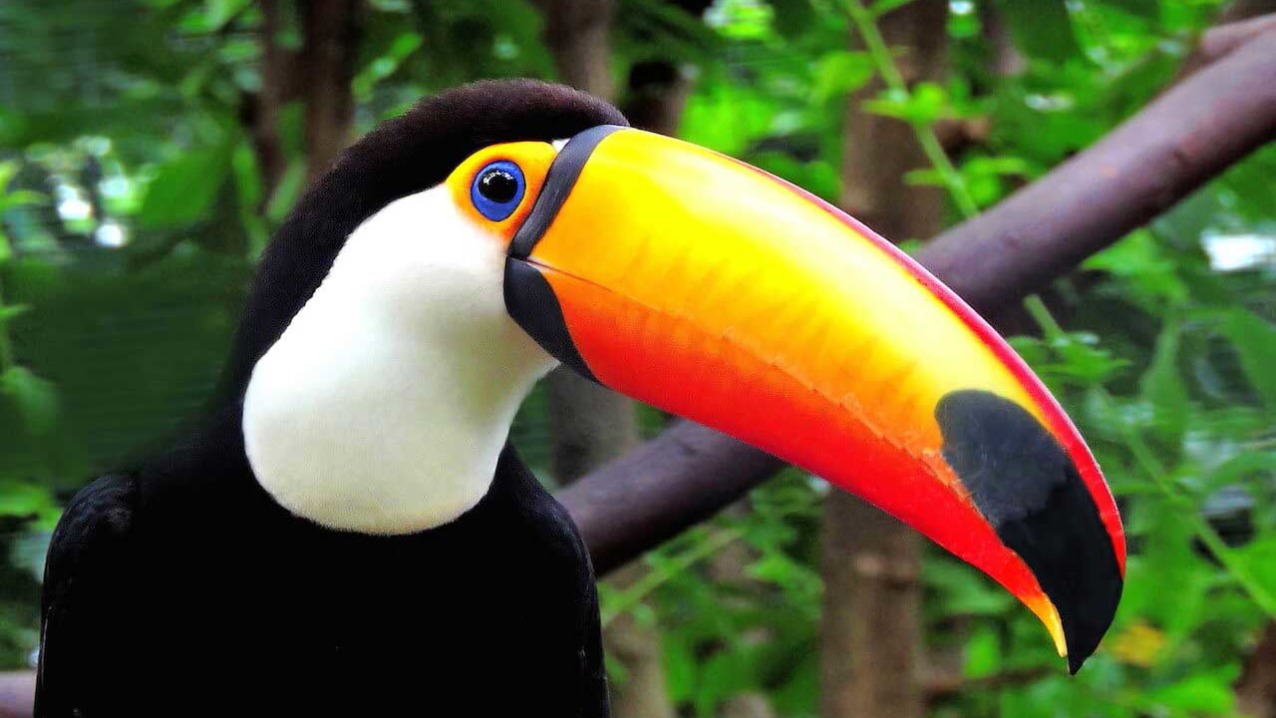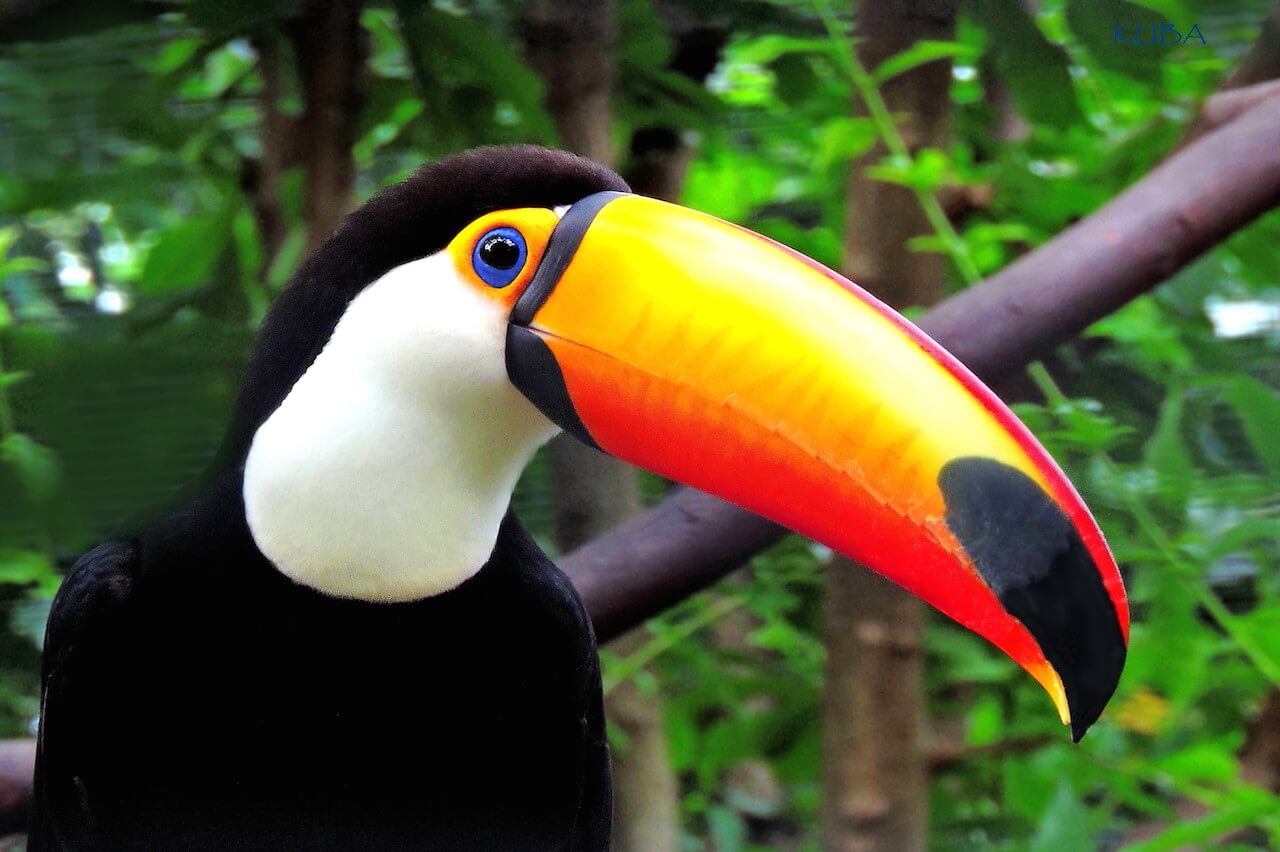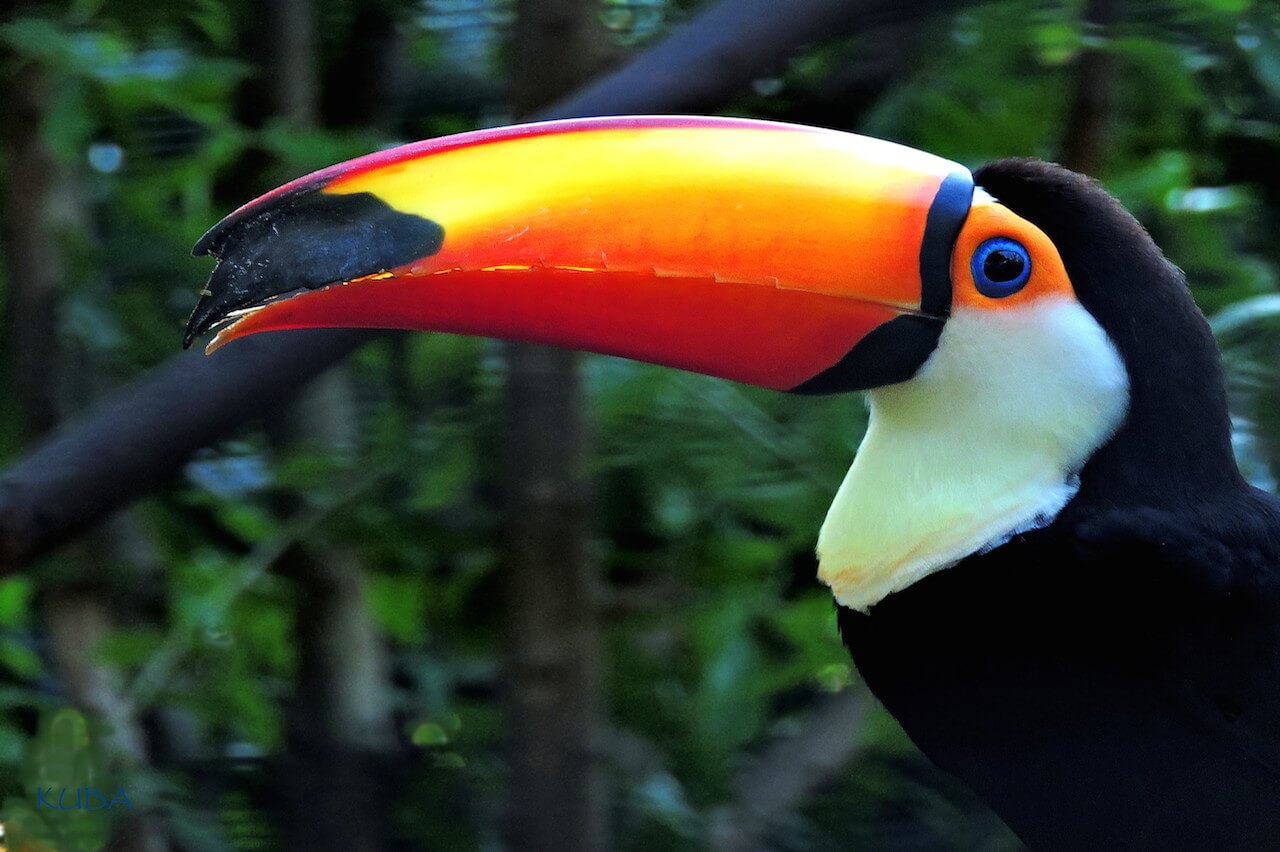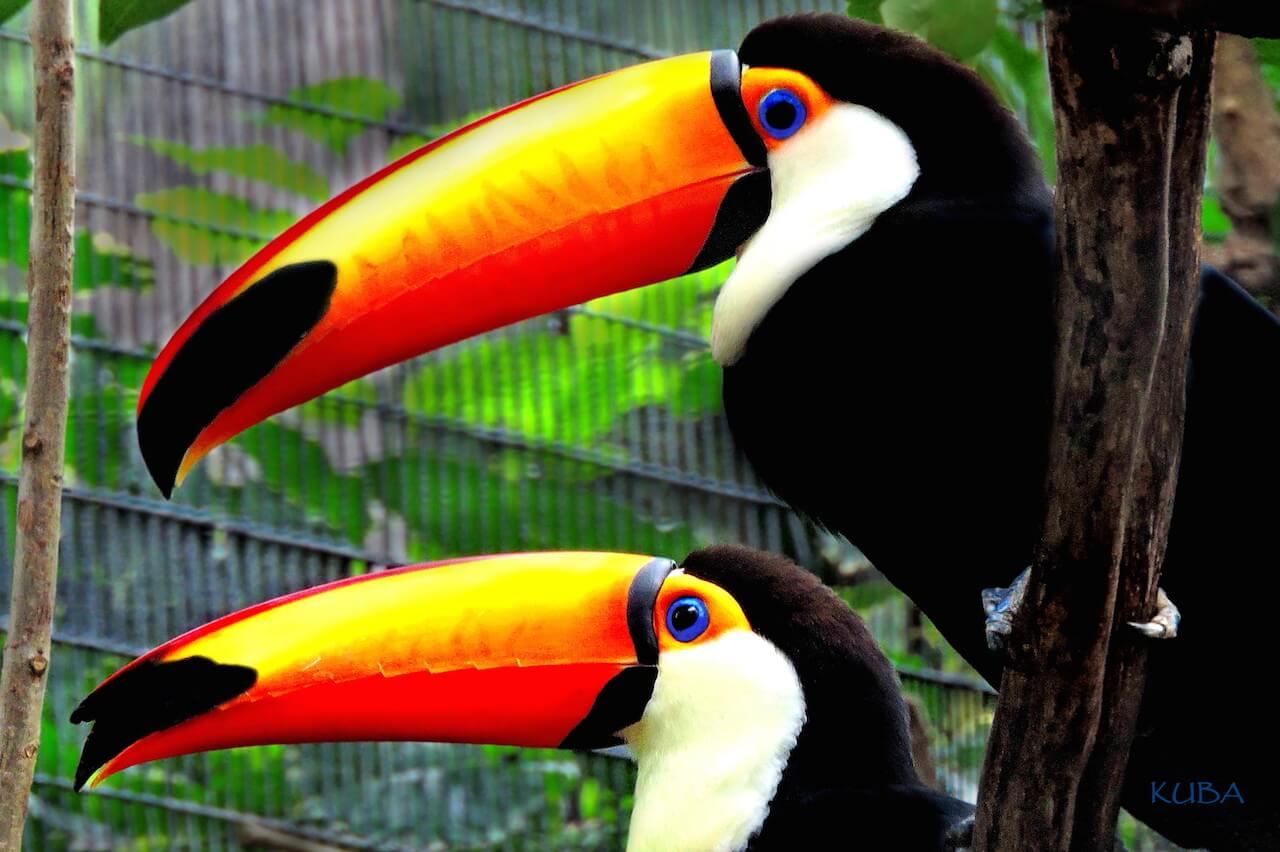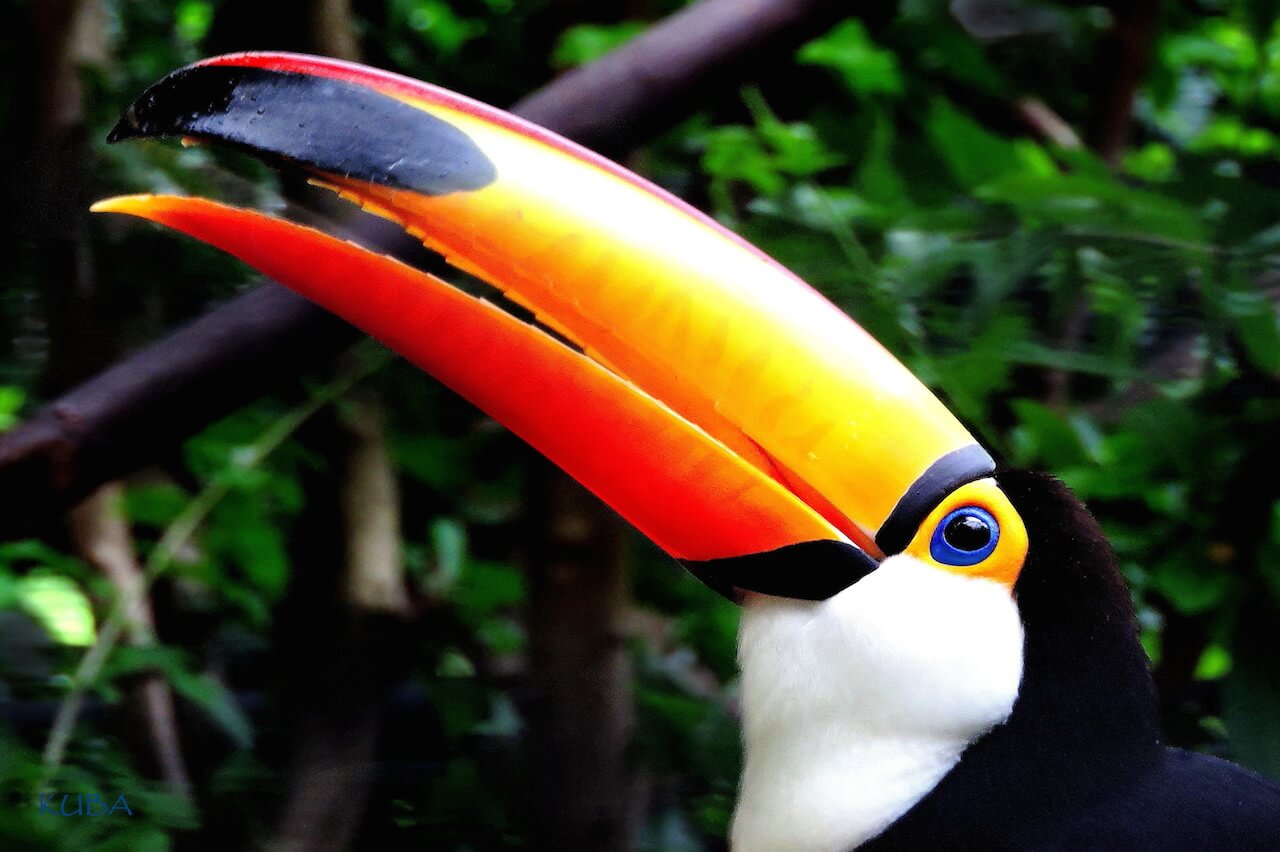ramphastos toco
Toco Toucan
About Me
Scientific Name: Ramphastos toco
Description
Toco toucans, Ramphastos toco, have the largest bill of any toucan. The toco toucan is mainly black, with white on the throat and upper breast. The bill is orange crimson, fading to greenish yellow. There’s a large black oval blotch near the tip of bill, and a narrow black line at the base. The most prominent feature of toucans are their bills, which are much lighter in weight than they appear.
Fun Facts
- The toucan’s large bill enables it to perch inside the crown of a tree, where branches are thicker, and reach far outwards to pluck berries or seed from twigs too thin to bear their weight.
- Toucans are moderately gregarious and fly in straggling flocks, one after another, rather than in compact bands, like parrots.
- Kingdom: Animalia
- Phylum: Chordata
- Class: Aves
- Order: Piciformes
Toucans get their name from ‘tucano’ given to them by the Tupi Indians of Brazil. The largest species, the toco toucan, is about 25 inches (64 cm) long. the smallest toucan is the aracar toucanet which is only about 14 inches (36 cm) long.
Toco toucans, Ramphastos toco, have the largest bill of any toucan. The toco toucan is mainly black, with white on the throat and upper breast. The bill is orange crimson, fading to greenish yellow. There’s a large black oval blotch near the tip of bill, and a narrow black line at the base. The most prominent feature of toucans are their bills, which are much lighter in weight than they appear. These large, boldly colored bills give them a distinctly out-of-balance appearance. A thin horny outer sheath encloses a hollow which is crisscrossed by many thin, bony, supporting rods. It has serrated edges which help to tear off pieces of larger fruits. Within the bill, the tongue is bristly and narrow, resembling a feather. It reaches to the tip of the bill.
The toucan’s large bill enables it to perch inside the crown of a tree, where branches are thicker, and reach far outwards to pluck berries or seed from twigs too thin to bear their weight. Seized in the tip of the bill, food is thrown back into the throat by an upward toss of the head.
The varied patterns of toucans’ bills may help these birds to recognize each other or attract a mate.
Toucans are found in tropical and subtropical forests in South America;, mainly in Brazil, Paraguay Argentina, and Bolivia. There are about 40 different species of toucans.
Toucans are moderately gregarious and fly in straggling flocks, one after another, rather than in compact bands, like parrots. They prefer to remain high in trees, where they hop from branch to branch. They bathe in pools of rain water in hollows high in trunks and limbs. They offer food to their companions and, perching well apart, preen them with the tips of long bills.
Toucans are playful birds and often engage in various games.
Their diet consists mainly of fruit but includes insects, an occasional lizard, eggs and nestlings of smaller birds.
Toucans nest in holes in trees. The nest chamber is never lined, but the 2-4 white eggs rest upon a few chips at the bottom, or upon a pebbly bed of regurgitated seeds of various sizes.
Parents share incubation and are, for birds of their size, impatient sitters, rarely remaining at their task for more than an hour and often leaving their eggs uncovered.
After about 16 days of incubation the nestlings hatch blind and naked, with no trace of down on their pink skins. Nestlings are fed by both parents, with increasing quantities of fruit. The feathers of the small toucanets do not begin to expand until they are nearly four weeks old. Parents will care for their young for about 8 weeks; however, small toucanets may fly from the nest when 43 days old.
Other Birds
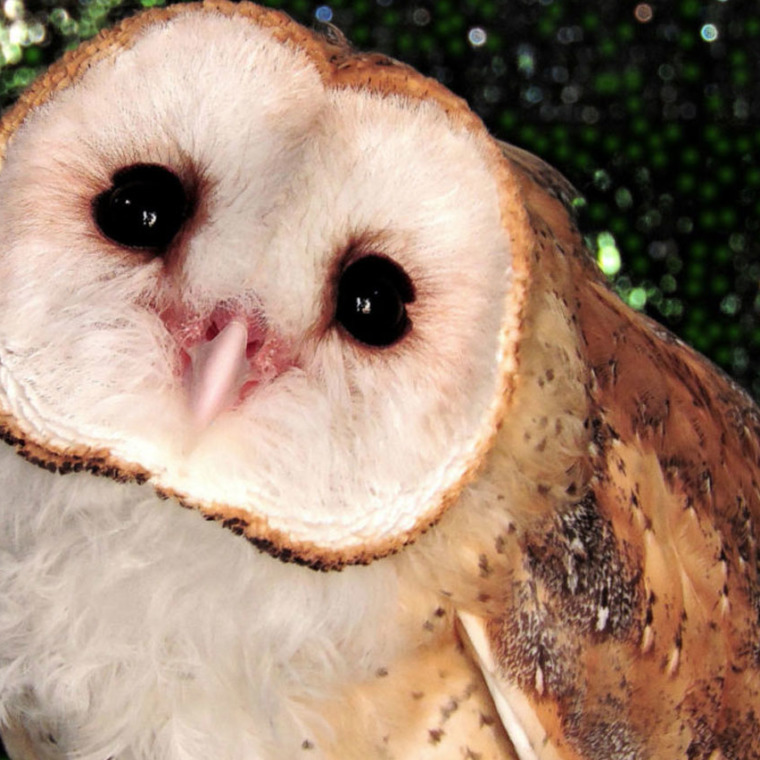
Barn Owls are found throughout the globe, in Europe, Africa, Asia, Austrailia, and the Americas
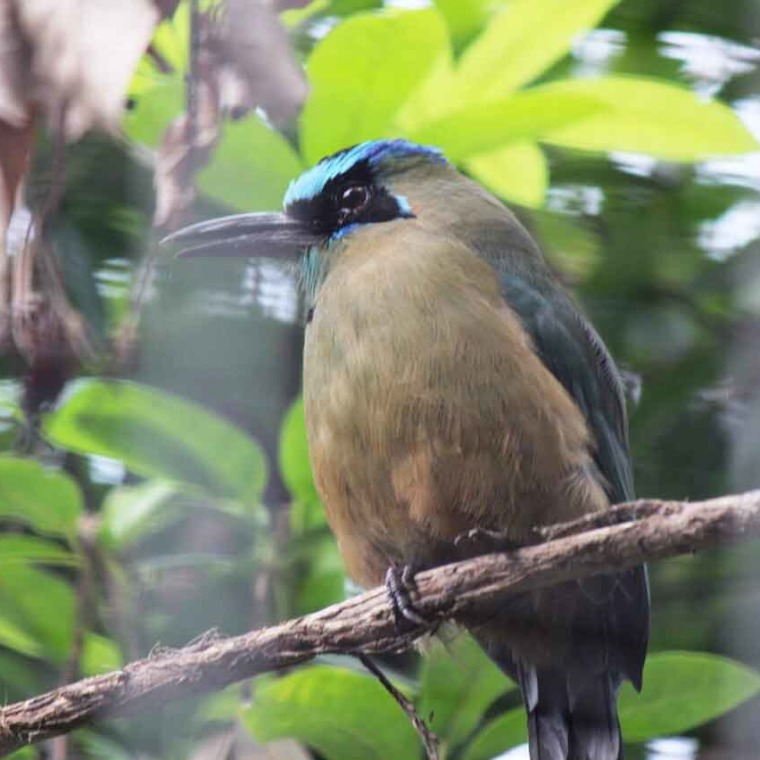
This animal can grow over a foot in length! Motmots possess a serrated beak and red eyes, with a black mask that encircles their heads.
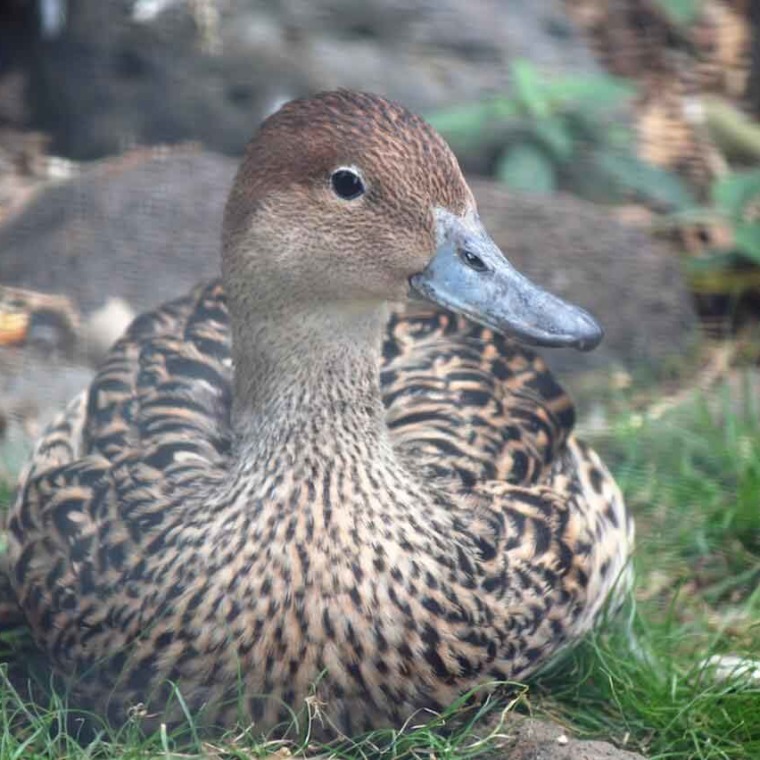
Koloa maoli are very secretive and difficult to observe except in protected areas such as Hanalei National Wildlife Refuge on Kauai.
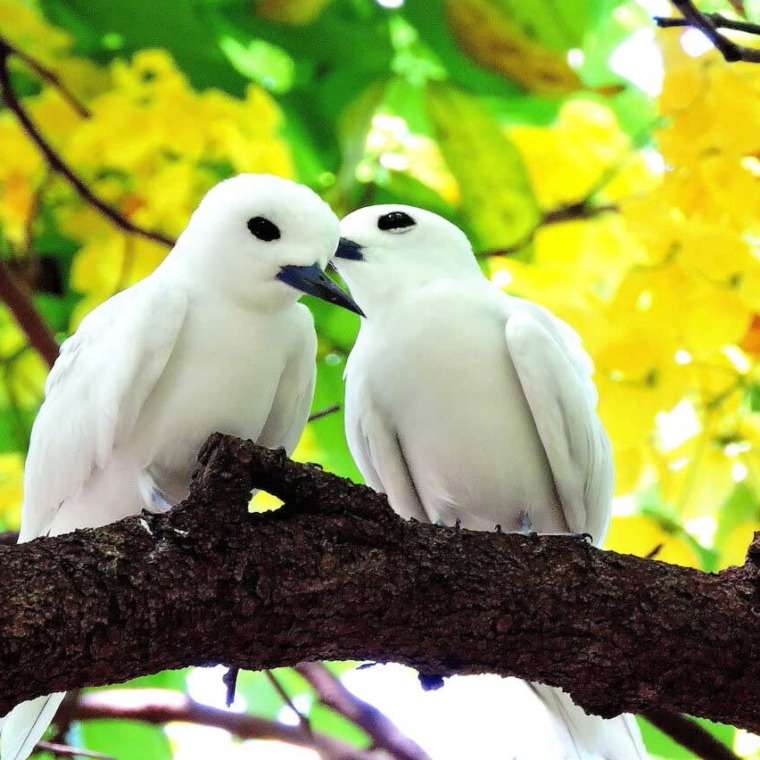
This bird is found primarily on islands, and has a wide ranger across the equatorial band of every ocean on Earth, save for the Arctic Ocean, which does not cross the equator.
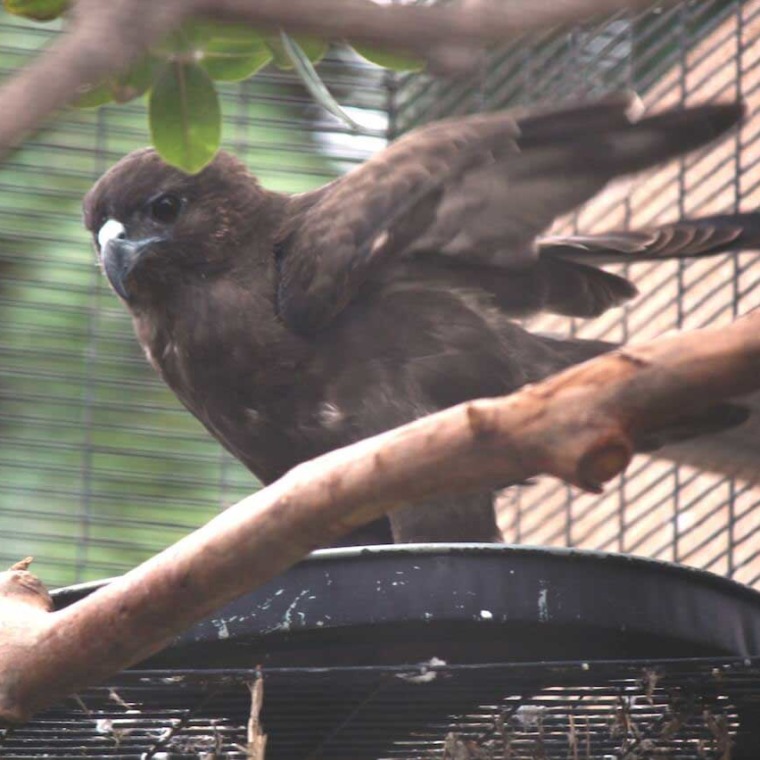
’Io prefer to hunt from tall perches that they use to survey their prey; however, they are known to dive at targets from mid-flight if the opportunity presents itself. are territorial and come together only to breed.


